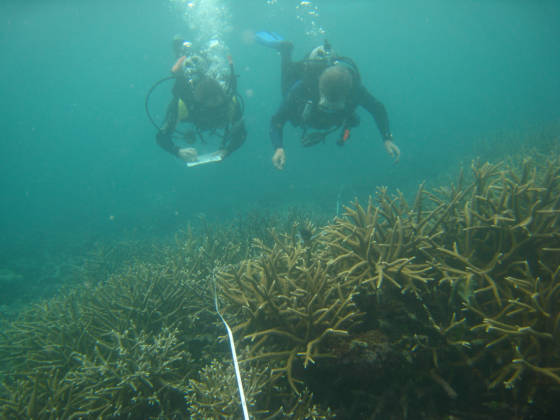WHEN I WAS 7 my family took a boat trip to see the Great Barrier Reef. We could see through the glass bottom of the ship. In the shallow waters, there were silver creatures, stingrays playing in the sand. But as we went deeper we saw colourful fish and coral. Unbeknown to me at the time, many of that coral would die off in my lifetime. It wasn’t until I was much older that I would find out why and return several times to see that it had slowly become bleached.

How Climate Change Transformed the Great Barrier Reef, a Place I Love
I visited the Great Barrier Reef a second time when I was about to head into university to study environmental science. I told my boyfriend at the time to be prepared for the colour and vibrancy of the Reef. I remembered its magnificence from when I was younger, so I wanted him to see it for himself. We jumped in with our snorkels and searched for coral. Though we found it, that vibrancy was gone — it was gray, spare for a few greens and blues. The fish were sparse, I thought maybe they had moved on to more colourful patches.
Had I brought him to the same spot that I had visited with my parents years ago? I’m sure I had. Had my childhood memory created something that wasn’t really there? Maybe.
A few years later, when I graduated with my degree, I returned a third time. Though this time, when I boarded the boat, I knew the danger the Reef was in. Climate change is increasing the world’s ocean temperatures, which is causing an increase in the acidity of the water. This, in turn, is bleaching the corals as they are unable to adapt to such a rapid change in the water’s composition.
This last time that I visited, I was even more shocked — more color had been lost. The Reef was sick and it is still growing worse today.
These changes to the Great Barrier Reef have huge implications for Australian tourism, which the local economy depends on. The continuing coral bleaching and the increase in severe weather conditions have reduced visitations to the Reef because it’s just seen as damaged.
The Great Barrier Reef has been experiencing bleaching events with increasing intensity for the last 19 years, including a major bleaching event in 2016 that killed 67% of coral on average over a 700-km region. That’s serious for tourists, tourism operators, fish and us, no matter where we live.
Coral reef absorbs and stores carbon dioxide, making it an important part of the world’s carbon storage. This means that coral bleaching events cause increases of carbon dioxide in the atmosphere. No matter where we live, the surviving corals around the world are contributing to our well-being. The Great Barrier Reef is the largest reef on our planet — it’s not only important for our bucket lists, it’s important for the air we breathe.